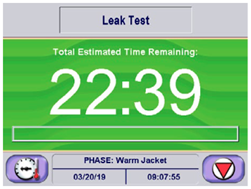
- Products
-
Sterile Processing
-
Products Software Repair Services Onsite SPD Solutions Offsite SPD Services Certified Pre-Owned Design and Construction Staffing Surgery Centers
- Endoscope Reprocessing
- Personal Protective Equipment
- Robotic Instrument Reprocessing
- Steam Sterilizers
- Sterile Processing Department Accessories
- Sterility Assurance and Monitoring
- Sterilization Pouches, Packaging, and Trays
- Surgical Instrument Cleaning Chemistries
- V-PRO Low Temperature Sterilization Systems
- Washing and Decontamination Systems
- ConnectAssure Technology
- SPM Surgical Asset Tracking Software
- SPM Endo Workflow Solution
- SPM Loaner Solution
- SPD Consulting and Performance Improvements
- Sterile Processing Education and Training
- Mobile Sterile Processing
-
-
Operating Room
-
Surgical Equipment Surgical Supplies & Instruments OR Environment & Integration Repair Services Certified Pre-Owned Design and Construction Staffing Surgery Centers
- Medical Monitors and Surgical Displays
- Nurse Documentation Stations
- Operating Room Storage Solutions
- Scrub Sinks
- Surgical and Medical Examination Lights
- Surgical Booms
- Surgical Table Accessories
- Surgical Tables
- Warming Cabinets
- Electrosurgical Products
- Operating and Exam Room Accessories
- Sterile Field Support
- Surgical Instruments
- Wire and Pin Management
-
-
Endoscopy Suite
-
Endoscope Reprocessing Endoscopy Devices and Accessories Endoscopy Equipment Software & Audiovisual Technology Repair Services Design and Construction Staffing Surgery Centers
- Automated Endoscope Reprocessors
- Endoscope Manual Cleaning
- Endoscope Drying Storage and Transport
- Endoscope Point of Use Pre Cleaning
- High-Level Disinfectants
- Enteroscopy and Capsule Delivery Devices
- Endoscopic Retrograde Cholangiopancreatography (ERCP)
- Endoscopic Ultrasound Procedure Devices
- Foreign Body Management Devices
- GI Bleed Management and Irrigation
- GI Procedure Products
- Polypectomy and Tissue Acquisition Devices
- Roth Net Retrieval Devices
- Urology Devices
- truFreeze Spray Cryotherapy System
- CO2 Insufflation
- Electrosurgical Unit and Equipment
- Irrigation Pumps
- Surgical Booms
- Surgical and Medical Examination Lights
- Certified Pre-Owned Endoscopes
-
- Education
- Shop STERIS
-
-
Resources
Certificates of Analysis
Device Compatibility Matrix
Instructions For Use
Medivators Hookup Guide
Safety Data Sheets -
Contact Us
Contact Form
Get a Quote or Information
Healthcare Live Chat
Locate Your STERIS Representative -
Global Sites
 United States
United States
 Canada (EN)
Canada (EN)
 Canada (FR)
Canada (FR)
 Deutschland
Deutschland
 Italia
Italia
 United Kingdom
United Kingdom
Europe, Middle East and Africa
 Australia
Australia
 New Zealand
New Zealand
 Singapore
Singapore
Asia-Pacific
 Brasil
Brasil
 México
México
América Latina - Live Chat
- Email Alerts








